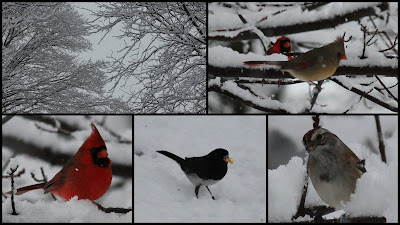A little research on eBird shows that a female BTBW was observed in British Colombia on December 18, 2011. Since BTBWs do not breed that far west, her genetic impulse to migrate must be really mixed up, sending her west instead of south.
Perhaps the male BTBW I saw will make it to the tropics yet. It is highly unlikely he could survive a harsh Chicago winter. BTBW diet mainly consists of insects and some small fruits. He has been seen taking advantage of the sap oozing from a tree drilled by a Yellow-bellied Sapsucker (which is a little north of its typical range, too). The presence of these birds underscores the importance of maintaining wildlife habitat in the middle of an urban landscape. Vive le Chicago Wilderness!
Both birds were easily seen from the sidewalk next to the Cycling Center. I was especially pleased to add the BTBW to my Illinois list for the year (#242), since I had previously not seen any this year. The handsome little guy was a real joy.












